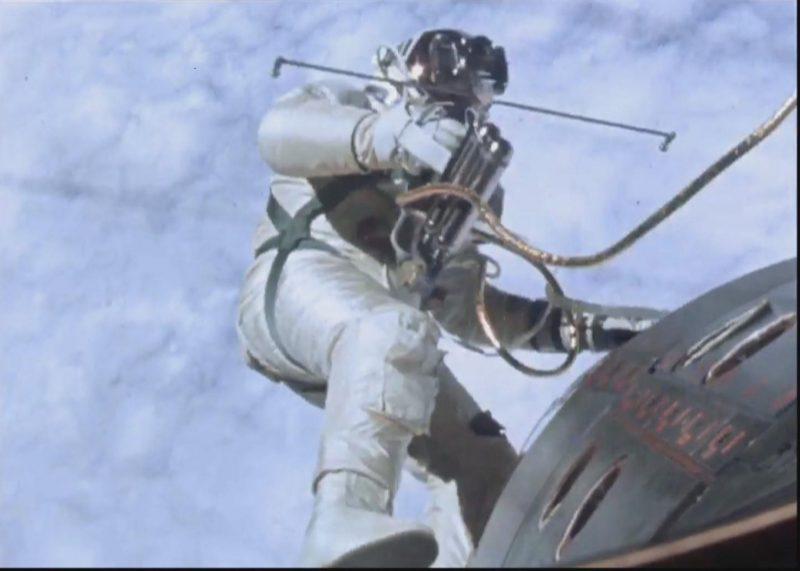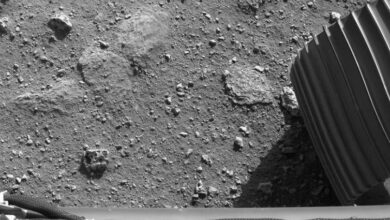Zambian colonization of Mars with Edward Mukuka Nkoloso

Few people know that attempts to reach a distant planet and establish a colony there were already undertaken in the distant 60s, and Edward Mukuka Nkoloso, brave astronauts from the African country of Zambia, were aiming at this bold project.
Today it is fashionable to talk about the possibility of colonizing Mars and argue about which country will be the first to set foot on the Red Planet. Zambia was among the racers. Of course, the Americans and their Elon Musk with his SpaceX company are considered one of the Martian race’s favorites.
The beginning of the 1960s was marked by a space race of unprecedented proportions. The Soviet Union struck at the US ambitions with the first manned flight into space, almost preventing the overseas rival from getting better after a series of successful launches of satellites with equipment and animals.
The Americans began to prepare their flight to the moon at a feverish pace, not suspecting that, besides the USSR, another player, Zambia, was claiming dominance in space.

Edward Mukuka Nkoloso
To understand this African country’s space program’s essence, you need to look into the past. During World War II, a guy named Edward Mukuka Nkoloso served in the British army. This man was distinguished by an inquisitive extraordinary mind and an active nature, rare for a native of Zambia. Not finding military glory on the battlefields, at the end of the war, Edward was demobilized with the rank of sergeant and began to look for himself in a peaceful life.
The former military man changed many different jobs – he taught, worked as an official, fought for his native country’s independence, and even sat in prison for a while.
Great opportunities for Nkoloso opened up in the administration of the first president of the independent Republic of Zambia, Kenneth Kaunda. It is difficult to say how Edward got into the presidential apparatus, but the fact remains – he became a famous person and respected.
National Academy of Sciences
Having received opportunities for his desires, restless and imbued with ineradicable optimism, Edward Mukuka Nkoloso took up the most daring project of his life. He founded a state institute with a very unusual name – the National Academy of Sciences, Philosophy and Space Research and, of course, headed it himself.
What philosophy was Edward vaguely imagined, but he had heard a lot about the space projects of the USA and the USSR, since the newly-made academician had access to radio and even television. Therefore, to not waste time, Edward Mukuka Nkoloso announced the launch of a national space program, the goal of which was the simultaneous colonization of the Moon and Mars.
Here it is immediately worth making a digression and saying that the knowledge of space among pundits from an African country was slightly superficial. It was known that it is and that in order to reach it, it is desirable to move vertically upward.
The scientific library of the Academy of Sciences consisted of books left behind by British missionaries who had fled the country and could not help in space exploration. But this did not become an obstacle to the stormy activities of Nkoloso and his associates.
Scientists were not interested in such trifles as the presence of water or life on the planets of the solar system. They immediately stated that the main purpose of the mission to Mars was to establish contact with the Martians and introduce them into the bosom of the Christian church.
It was not customary to speak at the National Academy of Sciences that the world scientific community was gnawing at doubts about the existence of at least some life on Mars or the Moon. Such seditious conversations could cast a shadow on the institution’s glorious patron – Edward Nkoloso, who personally saw the Martians through a telescope.
Mata Mwambwa
The honor of becoming the first space pioneer fell to a simple 16-year-old village girl named Mata Mwambwa, the hardships of interplanetary travel with which two cats were to share. The girl also had understudies, as it should be in a real space team.
For the space program’s implementation, Nkoloso demanded to give him from the budget a considerable amount. While the top officials were thinking about the feasibility of investment, Edward and his associates began preparations for the flight.

The young republic did not have its own space base, so a flight training center was organized on one of the farms located near the capital of the country, Lusaka. There, Mata Mwambwa, the first Zambian female astronaut, and her understudies were taught to be weightless, overloaded, and other difficulties.
As funding was delayed, Nkoloso and his team of scientists had to do everything with their own hands, not disdaining at the same time improvised means. To simulate overloads, a barrel was used, into which the future cosmonaut was stuffed and launched along the slope of the hill. It was even more difficult to imitate weightlessness, but even here the academics coped – they tied a person to bungee and rocked them with all their might.

Later, the exercise was made more difficult by cutting the rope at the highest point of the ascent and then trying to catch the astronaut with a stretched blanket. But most of the time was devoted to such discipline as hand-walking. According to Edward Mukuka Nkoloso, it is in this way that the first earthlings will have to move along the surface of the Moon and Mars.
In general, the expression “through hardships to the stars” perfectly describes the training program of the Zambian astronauts. In parallel, the best minds of the National Academy of Sciences were developing the spacecraft.
Space rocket

Rocketry in Zambia was in a very rudimentary state, so an extraordinary method was chosen to deliver the first crew to Mars – a catapult. The first cosmonaut was to be placed in a special capsule made of copper and aluminum with a supply of food and water, and then launched towards the Red Planet.
The newly built Independence Stadium in Lusaka, which can accommodate up to 30,000 spectators, was chosen as the launch site. The start was scheduled for October 24, 1964, timed to coincide with the country’s Independence Day.
D-Kalu 1
Although the spacecraft was named after President Kenneth Kaunda – “D-Kalu 1”, this did not stop the opponents of the project from thwarting the cause of progress. Some officials spoke out against the use of a new stadium for space ejection, where festive events were planned.
Of course, a struggle began on the sidelines of power, which the President of the Academy of Sciences lost. For all his failures, Edward Nkoloso blamed the intrigues of the West and East, which rallied against him and, out of fear of witnessing the triumph of Zambian cosmonautics, built intrigues through their agents.
Failures of Zambian colonization of Mars
Another blow lay in wait for the Zambian scientist – the Republic of Zambia’s treasury did not have the amount necessary for the flight to Mars and the Moon, and for some reason foreign investors did not respond. Even the fact that Nkoloso himself personally asked for money, knocking the thresholds, did not give any result.
Enemies also reached the first woman astronaut – young Mata Mwambwa unexpectedly became pregnant right in the process of preparing for flights and her parents, angry with this, took her home to the village.
There was no one to complain to, since the President himself, who at first clapped his hands in anticipation of glory, suddenly lost interest in astronautics. The grandiose project collapsed, destroying the last hopes for the Zambian colonization of Mars.
Fortunately for posterity, the Republic of Zambia’s space program has been so widely publicized that it has inspired artists, writers and psychiatrists around the world for years. We owe her the appearance of such phenomena in art as the photographic project of Christine de Middel “Afronauts” and the film “Gay Niggas from Outer Space”, ruthless by its idiocy.
As for Edward Mukuka Nkoloso, he, as one would expect, did not give up and threw himself headlong into the abyss of other affairs and projects. He unsuccessfully ran for mayor of Lusaka, then mired in diplomatic affairs, from which he emerged as a knight of the jubilee Soviet medal for the 40th anniversary of Victory.
Later Edward Mukuka Nkoloso tried to become a lawyer and even received a law degree. At the end of his life, Edward Festus Mukuka Nkoloso received the military rank of colonel, and when he died, and this happened on March 4, 1989, he was buried with presidential honors.
One thing can be said about this man – he became a famous person in his country, despite the absurdity of the projects and the dense amateurism. But if he could stop for even a second and direct his energy in the right direction, then perhaps the whole world would applaud him.




